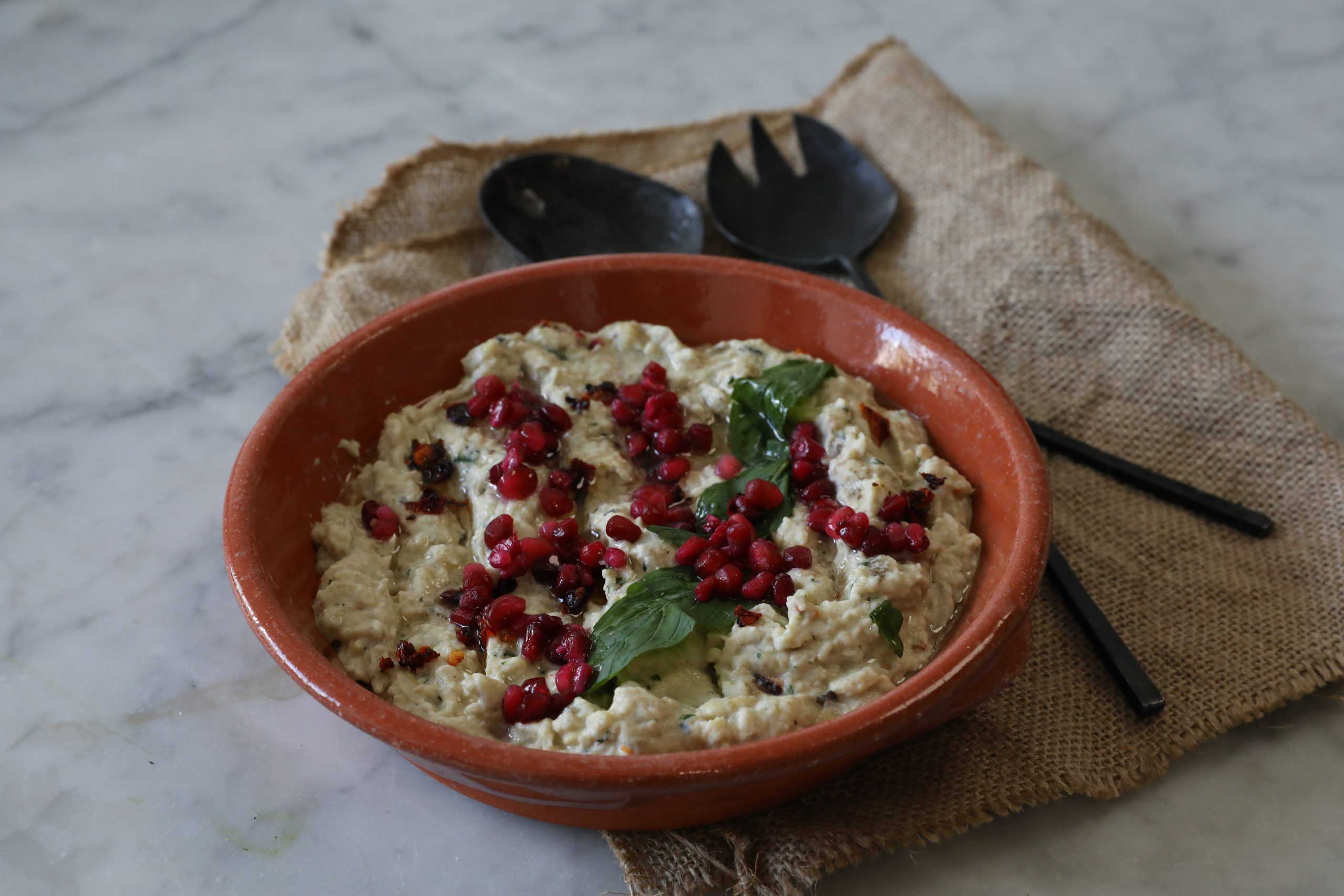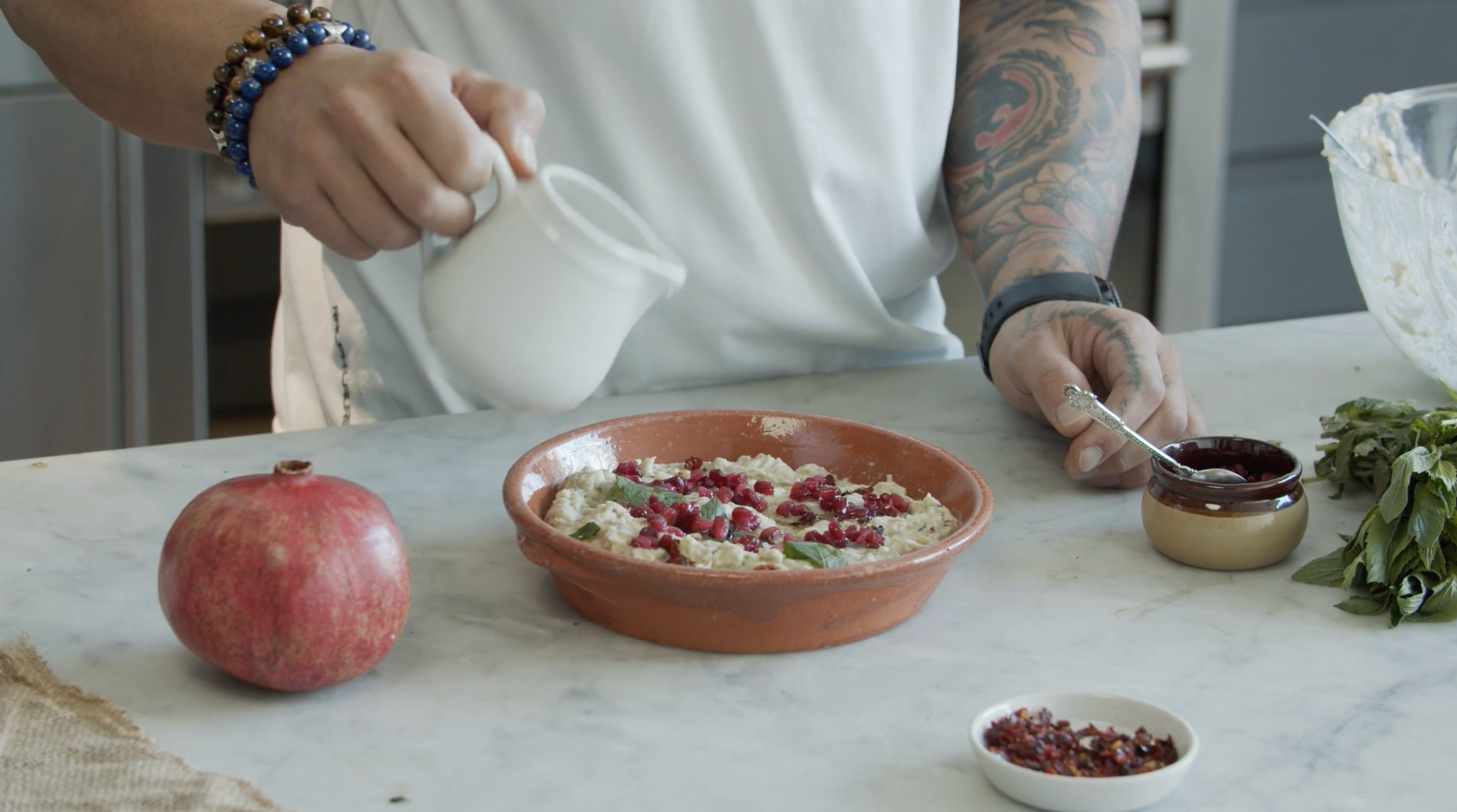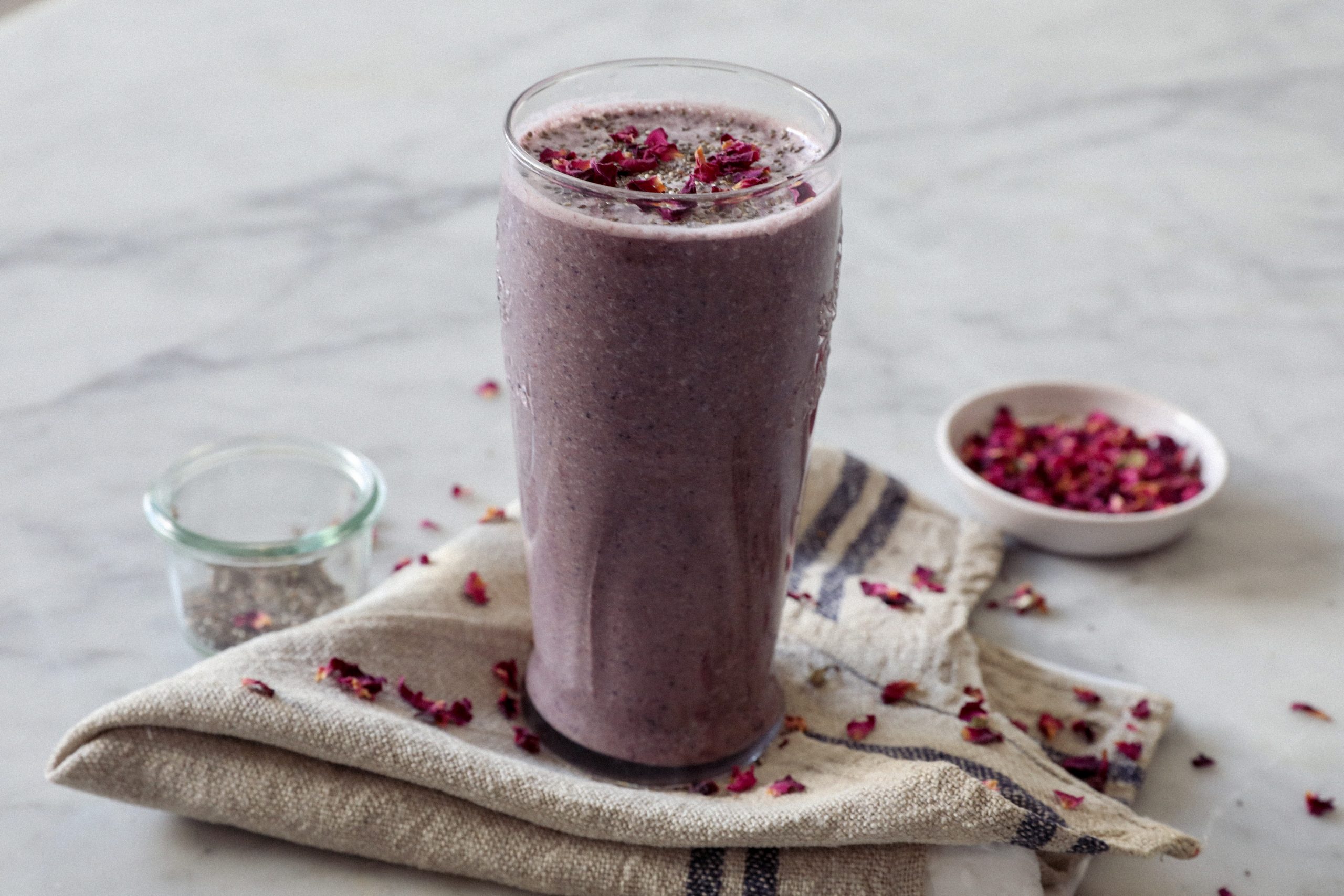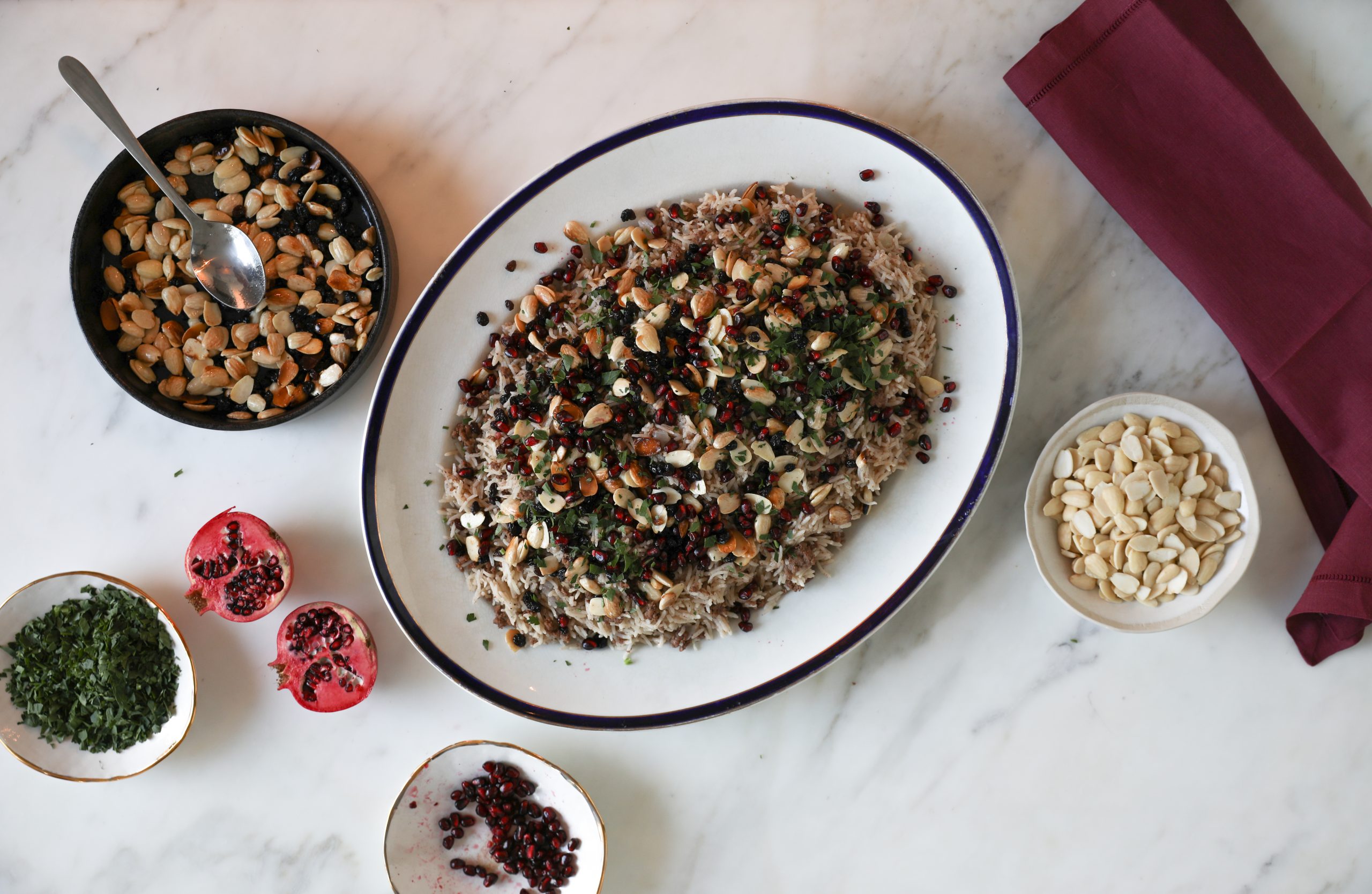Moodi’s Baba Ghanoush
 Lebanon
Lebanon 
My mum (Hanan Sabsabi) cannot recollect a childhood without Baba Ghanoush. As a young girl she would observe her mother closely as she lit a small gas stove on the roof top to cook a few eggplants, burning the skins over a flame with that wonderful smoky scent filling the air. Roof tops are predominately flat in Lebanon and serve as a concrete courtyard and our roof top was also where my mother gave birth to me in the midst of Civil War. Hospitals were a luxury.
Mum has not altered the way her mother taught her to make Baba Ghanoush when she was young. Firstly, out of respect, but also to preserve the way this magnificent intergenerational dip – or main course for us – was made.
In addition to the usual household ingredients – tahini, garlic, lemon and salt – my mother’s mother, my grandmother, would also add mint and parsley. This was not the norm as Baba Ghanoush was considered to be a side dish, and although it tasted amazing, it was not usually the highlight of any course. The highlights would typically be Kebbe which is widely thought of as Lebanon’s national dish – either raw a bit like steak tartare or cooked a bit like bulgur wheat dumplings. The alternatives could be barbecued kofta (meatballs) and lamb or fried fish. For the less economically privileged, Baba Ghanoush would take centre stage and so garnishes were used and also mixed into the dip. With no blender, it was always clear what ingredients were present and the Baba Ghanoush had a rustic, honest and transparent appearance.
What is quite remarkable about Lebanese cuisine is that socio-economic background has not determined what we deem our national dishes or what we all love to consume – albeit that it may have influenced the frequency with which some of us had the opportunity to enjoy certain dishes. For my part, I know that in our family, we may have been materially impoverished but we were never spiritually or emotionally impoverished. ٱلْحَمْدُ لِلَّٰهِ
My mother and grandmother didn’t study nutrition in the way that I have done and so didn’t necessarily know all the nutritional benefits in Baba Ghanoush but they knew it was good for us and that it was a family favourite. It still is and I’m grateful my mum has taught me our family version.
I recommend it to everyone: easy to make, vegan, gluten-free, keto-friendly and simply delicious – with significant nutritional benefits:
Baba Ghanoush is rich in fibre which is great for digestive health, regulating the appetite and controlling diabetes via the regulation of blood sugar levels.
The phytonutrients protect the cell membranes and lipids in the brain and help regulate cholesterol. They also relax the blood vessels which results in better blood flow.
The bioflavonoids help regulate blood pressure.
It is rich in Vitamin K which helps prevent blood clotting.
Its polyphenols play a role in detoxifying enzymes and are important in treating cancer.
It is rich in magnesium and potassium which is great for preventing cramping during Ramadan.
The high oxygen radical absorbing qualities of eggplant make it one of the healthiest foods on the planet.
Eggplant is also a vegetable rich in good fats (Omega 3 & 6) the EFA’s (essential fatty acids).
Give it a try. You won’t go back to shop-bought!
Share this story

Cook the eggplant. This can be done in a number of different ways. Over charcoal is my favourite. Next best is over a gas burner like my mum used to do it – although that can be quite messy. Another option is to bake them at 180C until they collapse and get very soft. Or grill them after a BBQ – if you don’t feel like doing any more work, you can peel them the next day, and it will work out the same.
The important thing is to pierce the eggplants before roasting them so that they don’t burst and mess is minimised.
Allow the eggplants to cool enough to handle then scoop the eggplant flesh out of the skins and place in a bowl.
Add the other ingredients. And blend. Don’t use an electric blender just mash with a potato masher or fork to keep a lovely rough, rustic texture.
Adjust seasoning to taste. I personally love a dash of chilli flakes. If you season thoughtfully, you will enjoy a wonderfully savoury yet refreshing dip.
Place the mixture in the fridge to cool for 2-3 hrs then adjust the seasoning with salt, lemon and other ingredients to your taste. (My mum’s recommendation is to allow the mixture to cool completely in the fridge, taste it ice-cold, then adjust the seasoning with salt, lemon and other ingredients as needed. Friends of mine like it warm.)
Place in your serving vessel, smoothing out the mixture as much as possible, adding ‘spoondentations’ for aesthetics. Garnish with mint leaves, pomegranate and a drizzle of olive oil. Serve with pita chips and vegetables for dipping or as a side with meat or fish, salad or vegetables.





